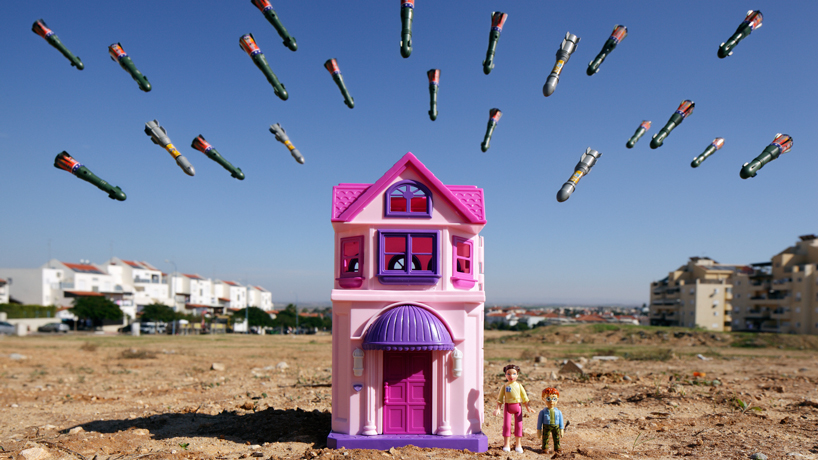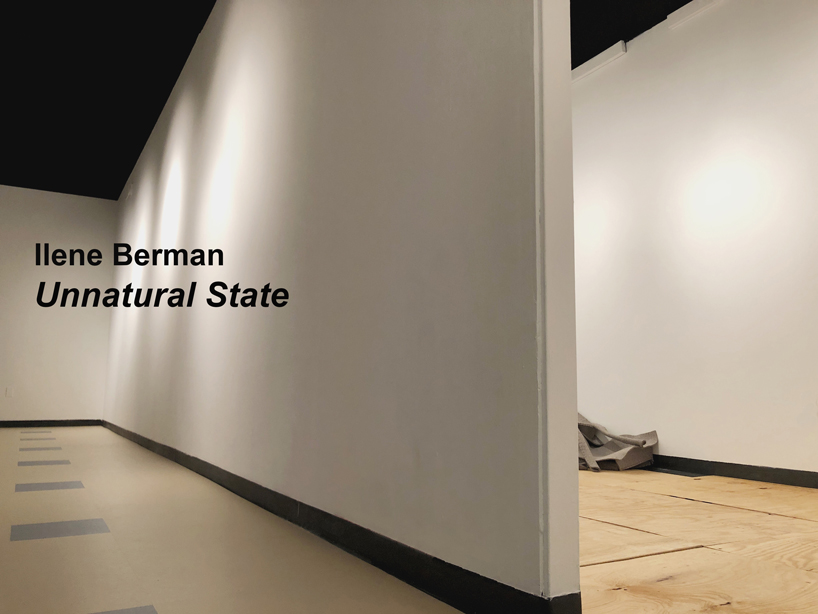
Brian McCarty’s “Sderot House” is one of the works that will be on display beginning Saturday in the new exhibition, “WAR-TOYS: Israel, West Bank and Gaza Strip,” at Gallery 210. (Image courtesy of Brian McCarty)
Children often share their experiences and emotions through indirect methods of communication, such as art and play. As a result, their personal accounts of war frequently go unseen and unheard by the international community.
Internationally exhibited artist and toy industry veteran Brian McCarty works to change that with “WAR-TOYS: Israel, West Bank, and Gaza Strip,” one of two new exhibitions opening in the first three weeks of the spring semester at Gallery 210 at the University of Missouri–St. Louis.
WAR-TOYS, which will be on display starting Saturday, features McCarty’s photographic work interpreting children’s therapeutic drawings and offers a rare yet fascinating insight into the contemporary experiences of Palestinian and Israeli boys and girls. Together, they provide a striking portrait of war from the eyes of the innocent.
McCarty’s postmodern integration of concept and character has earned his photography a prominent position in the Art-Toy and Pop Surrealist movements. Yet, his work is often more akin to reportage than photo-illustration. His approach is grounded in documenting actual — albeit manufactured — moments of time from personal perspectives.
Since 2011, McCarty has worked with local humanitarian organizations in Israel and the Palestinian territories, conducting art-based sessions with children who were severely affected by the conflict. Rocket attacks, air strikes, gunfire, and explosions were parts of daily life for this generation. With the help of specialized therapists and caregivers, questions were posed to understand the events the youth witnessed, and they were invited to create pictures of their lives and experiences.
WAR-TOYS, curated by New York-based Tinca Art, Inc. founder Catinca Tabacaru and organized by Tinca Art, Inc., and Exhibits USA/Mid-America Arts Alliance, presents the children’s drawings presented alongside McCarty’s photographs. Featuring locally found toys placed and posed in the actual locations described by the children, the photographs recreate shared fears and witnessed events while also documenting the plastic playthings available to boys and girls in each area.
In the art therapy sharing process, children would often reveal the details that were most important or impactful to them, but some elements were buried, as if to protect them. The viewers’ eyes will move back and forth from McCarty’s works to the children’s drawings, recognizing the similarities and differences, but most importantly, reading between the lines. The exhibition also includes an immersive “safe room” experience inspired by the classrooms and bunkers McCarty visited in the region.
The exhibition will run through March 14.
 Sculptor Ilene Berman’s new exhibition, “Unnatural States,” explores the social constructs around education.
Sculptor Ilene Berman’s new exhibition, “Unnatural States,” explores the social constructs around education.
Gallery 210 will also present St. Louis-based sculptor Ilene Berman’s exhibition “Unnatural States,” beginning Feb. 8. Berman will be on hand to deliver an artist talk at 4 p.m. with a reception to follow.
Berman has earned attention for work addressing issues of social justice, and “Unnatural States” explores the social constructs around education with an installation of institutional floor tiles, chalkboard, several dozen soft-sculpture student desks and a two-channel video.
In this work, Berman ponders if art has the capacity to adequately address the structural concerns of our day and if an artist can engage viewers in these concerns by creating spaces for them to think and feel.
Berman writes that she is creating a space that asks the visitor “to consider the social structures that prevent schools from being places to practice freedom and asks who is hurt by and who benefits from this constructed absence of freedom?”
The exhibition will remain on display through May 9.
Both “WAR-Toys: Israel, West Bank and Gaza Strip” and “Unnatural States” are made possible by the Missouri Arts Council, UMSL’s Center for the Humanities and the College of Arts and Sciences.














